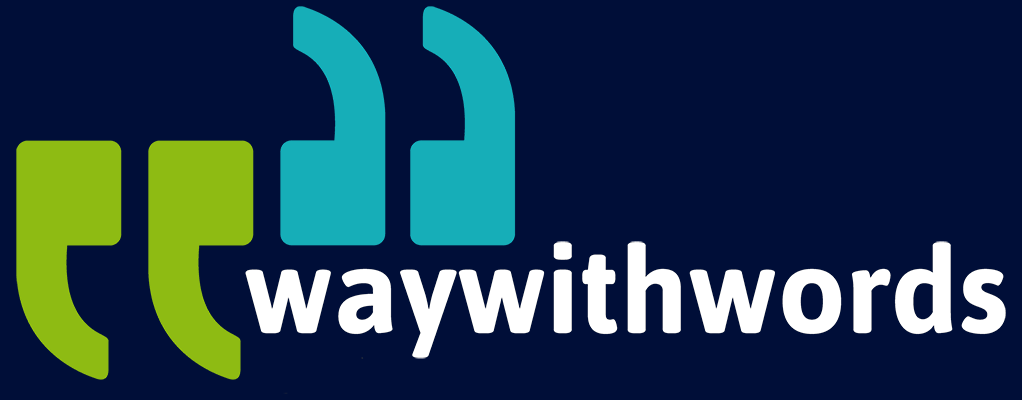Managing Multilingual Speech Data: Strategies for Global Applications
How do I Handle Multilingual Speech Data?
The use of speech data to support artificial intelligence, voice-user interfaces, and machine learning systems is expanding rapidly across linguistic and geographic frontiers. Multilingual speech data management has evolved into a core capability for organisations developing global applications. Whether it’s choosing between synthetic and real speech data, enabling real-time multilingual support through voice assistants, refining transcription models for regional dialects, or training AI-driven tools to understand diverse populations, the ability to handle multilingual data with precision is a competitive advantage.
Organisations managing multilingual speech content must navigate significant complexities: phonetic and lexical variations across languages, hybrid speech patterns such as code-switching, and the structural differences between language families. Furthermore, managing multilingual data securely and in compliance with international regulations adds layers of operational and legal responsibility. A lack of strategy here leads to issues such as data fragmentation, reduced speech recognition accuracy, and poor cross-cultural usability.
Multilingual speech data management isn’t just a technical issue—it’s a foundational component of AI that reaches users on a global scale. This demands thoughtful design, inclusive datasets, and efficient processing infrastructure.
Some common questions asked in this context include:
- How do I identify and separate languages accurately in multilingual audio recordings?
- What data formats and metadata are best suited for organising multilingual datasets for AI training?
- How can speech data from different languages be integrated into one analysis pipeline while maintaining linguistic fidelity?
- What ethical considerations should I follow when working with minority languages or underrepresented communities?
This short guide expands on these questions by examining the full ecosystem of multilingual speech data—from initial collection and processing to integration, compliance, and future innovation.
10 Key Multilingual Speech Data Topics
1. Challenges in Multilingual Speech Data Management
Managing multilingual speech data presents a unique set of challenges that differ significantly from monolingual speech processing. Firstly, there’s the technical difficulty of recognising and transcribing speech that may contain multiple languages within the same audio clip. Many speakers, particularly in bilingual or multilingual societies, code-switch between languages mid-sentence or even mid-word. This complicates automatic speech recognition (ASR) and transcription tasks.
Secondly, linguistic and phonetic diversity must be addressed. Each language has unique phonetic characteristics, vocabulary, syntax, and prosody. Training models to account for these differences requires vast, labelled datasets for each language variant. This is especially complex when including under-resourced languages with limited digital data.
Another challenge lies in consistency. Transcripts across languages need to follow a standard format and quality benchmark, even if annotation styles differ by language. Without uniformity, the data becomes difficult to scale and integrate.
Finally, cultural considerations affect speaker behaviour and interpretation of meaning. Without cultural context, speech data risks being misinterpreted, leading to reduced model accuracy. Ensuring cultural and linguistic inclusivity is critical to managing global speech data effectively.

2. Handling Multilingual Data Through Language Identification and Segmentation
Language identification (LID) and segmentation are foundational for multilingual speech data management. LID determines which language(s) are spoken in a recording, while segmentation isolates these language segments to allow for accurate transcription and analysis.
Modern LID systems use machine learning models trained on phonetic and lexical features to identify languages. These systems must be robust enough to handle noisy audio, overlapping speech, and similar-sounding languages. Confidence scores are often assigned to help manage uncertainty.
Segmentation, on the other hand, requires careful analysis of acoustic features, including pitch, intonation, and pauses, to detect language boundaries. This is especially challenging when dealing with spontaneous speech or dialects.
Combining LID with human review is a best practice. Automated tools provide efficiency, but linguists bring context awareness and cultural insight that machines lack. Incorporating both ensures higher accuracy and reliability, particularly in mission-critical applications such as healthcare or legal transcription.
3. Structuring Multilingual Datasets for Global Speech Data Applications
Building effective multilingual datasets starts with establishing a robust structure that ensures scalability, usability, and compliance. Each file should be tagged with metadata such as language codes (e.g., ISO 639-3), speaker demographics, recording environment, and transcription status.
Speech recordings should be segmented uniformly across languages to standardise analysis. This might include using consistent audio formats, sample rates, and file-naming conventions. Annotations should follow a shared schema, even when the text is in different scripts or follows distinct linguistic conventions.
To enable multilingual model training, data must be normalised to account for variation in recording quality, background noise, and speaker accents. Balancing datasets by speaker gender, age, and dialect ensures the AI model is fair and unbiased.
Including translation and transliteration layers can support cross-language learning and machine translation tasks. Properly structured multilingual data unlocks higher model generalisation, improved performance, and simplified deployment across regions.
4. Addressing Cultural and Dialectal Variation in Multilingual Speech Data
Multilingual speech data management must reflect not only multiple languages but also the vast internal diversity within each language. Dialects, sociolects, and regional accents can dramatically influence pronunciation, vocabulary, and grammar.
For instance, Arabic spoken in Egypt differs significantly from Arabic in Morocco, and these differences affect ASR performance. Including a wide range of dialectal samples in training data is essential to ensure broad coverage and reduce bias.
Cultural context also plays a role. Non-verbal sounds, such as laughter or emotional expressions, vary in significance across cultures. Tone, sarcasm, and formality levels must be interpreted correctly to ensure accurate transcription and annotation.
Partnering with native speakers and local linguists ensures that dialectal nuances and cultural meanings are preserved. This is particularly vital when data is used to build products intended for public or customer-facing applications.
5. Case Studies in Multilingual Speech Data Management
Real-world examples offer critical insights into effective multilingual speech data management. One such case is the development of multilingual voice assistants by large technology firms. These assistants must process commands in multiple languages seamlessly, often switching between them within the same user session.
Another example is global customer support platforms that use speech recognition to transcribe calls in dozens of languages. Here, speech data is segmented, translated, and archived in structured databases that allow easy search and compliance monitoring.
In academia, multilingual speech corpora have been created to study language learning, endangered languages, and linguistic typology. Projects like the GlobalPhone and Common Voice by Mozilla exemplify large-scale, open multilingual datasets built with community and researcher collaboration.
These case studies highlight the importance of scale, community involvement, and the strategic integration of diverse data sources for successful multilingual speech data initiatives.
6. Best Practices for Multilingual Speech Data Integration
Multilingual data integration requires consistent protocols to avoid fragmentation. One critical practice is creating a centralised repository where all language datasets are stored with standardised structures and naming conventions.
Using interoperable file formats (e.g., JSON, XML, CSV) allows seamless integration with speech analysis tools. Metadata tagging must be consistent across all datasets for searchability and automated processing.
Version control is essential when working with annotated or corrected data. Maintaining records of changes ensures transparency, facilitates collaboration, and allows models to be retrained with the most recent information.
Automated quality assurance processes—such as validation scripts that check file integrity, transcription accuracy, and language tag consistency—enhance data reliability. Finally, maintaining multilingual glossaries and annotation guidelines ensures consistency across language teams.

7. Transcription and Annotation in Handling Multilingual Data
Accurate transcription and annotation are the backbone of multilingual speech data applications, typically also used for comprehensive captioning and transcription solutions. Transcription guidelines should address language-specific elements such as spelling conventions, script direction (e.g., right-to-left), and punctuation standards.
Annotation extends beyond text and may include speaker identification, timestamping, emotion tagging, and background noise markers. These annotations must be language-aware—what is relevant in one language may be inappropriate or irrelevant in another.
Tools like ELAN, Praat, or proprietary platforms can support multilingual transcription workflows, offering customisable interfaces and plugin support for various scripts. Quality assurance involves both peer review and automated metrics such as word error rate (WER).
To achieve scale, transcription teams must be trained consistently and supported with robust style guides. Transcription output should be integrated into the larger data lifecycle, feeding back into model training and refinement.
8. Tools and Technologies for Multilingual Speech Data Management
Numerous tools and platforms facilitate multilingual speech data processing. Open-source toolkits such as Kaldi and ESPnet support multilingual ASR model development. Commercial solutions like Speechmatics, Google Speech-to-Text, and Amazon Transcribe offer multilingual support with varying degrees of accuracy and scalability.
Language identification tools such as langid.py or fastText enable rapid segmentation, while annotation platforms like Doccano or Label Studio provide multilingual support with user-friendly interfaces.
Translation memory tools, phoneme recognition engines, and multilingual NLP libraries (e.g., spaCy, HuggingFace Transformers) assist in post-processing and analysis.
Integrating these technologies into a single processing pipeline enhances efficiency and reproducibility. Organisations must carefully select tools based on project needs, budget, and language coverage.
9. Compliance and Ethical Considerations for Global Speech Data Applications
Ethical data handling is especially important when dealing with multilingual speech. Recording, storing, and processing spoken data often involves personal information and identifiable voices, triggering privacy obligations.
Regulatory frameworks such as GDPR (EU), CCPA (US), and POPIA (South Africa) require explicit consent, transparency, and the right to data deletion. Projects should maintain records of consent and anonymise data where appropriate.
Special care must be taken when working with vulnerable groups or minority languages. This includes obtaining culturally informed consent and ensuring the data is not used in ways that harm or exploit communities.
Implementing data access controls, encryption, and audit trails ensures secure handling. Ethical review boards or community advisory panels can guide project governance.
10. Future Innovations in Multilingual AI and Speech Data
The future of multilingual speech data lies in deeper integration with AI technologies. Advancements in self-supervised learning are enabling models like wav2vec and Whisper to learn from raw audio across languages without requiring large annotated datasets.
Zero-shot and few-shot learning approaches are making it possible to support low-resource languages with minimal training data. AI models are also being designed to handle language mixing and code-switching more effectively.
Real-time multilingual transcription and translation are becoming more accurate and accessible, thanks to cloud-based services and mobile hardware advancements.
Additionally, research is focusing on building inclusive datasets that reflect global linguistic diversity, supporting the development of AI that is equitable and universally accessible.

Key Tips for Multilingual Speech Data Management
- Standardise language codes (e.g., ISO 639-3) and apply consistent metadata tagging across all datasets.
- Use robust language identification models but validate outputs with native-language human reviewers.
- Include dialectical diversity in training sets to avoid overfitting to dominant forms of a language.
- Store and process data in alignment with GDPR, CCPA, POPIA, and other relevant privacy frameworks.
- Work with academic linguists or language consultants when scaling across languages with limited resources.
Effectively managing multilingual speech data requires a blend of linguistic insight, technical architecture, and regulatory diligence. As businesses and institutions increasingly rely on voice-driven and AI-supported services across multiple languages, their success hinges on the quality and versatility of the speech data infrastructure behind them.
Beyond technical execution, the effort to handle multilingual data responsibly has broader implications. It touches on inclusivity, accessibility, and the preservation of linguistic diversity. Handling multilingual data properly means acknowledging the cultural and societal role language plays, especially in underrepresented communities. That is why designing multilingual speech solutions should begin with strategy, proceed with ethical rigour, and evolve continuously based on emerging needs and innovations.
Those that do it well not only unlock new markets and users—they lead the charge in shaping technology that understands and respects human diversity.
Further Multilingual Speech Data Resources
Wikipedia: Multilingualism – This article provides an overview of multilingualism and its implications, essential for understanding multilingual speech data management.
Way With Words: Speech Collection – Way With Words implements robust security measures for storing speech data, ensuring confidentiality and integrity. Their solutions comply with global standards, safeguarding sensitive information and maintaining trust among clients and stakeholders.
